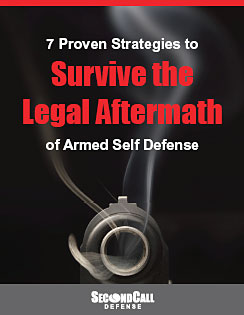Introduction to Holsters: Waistband Carry
by Keith Coniglio
How we carry our defensive firearm is just as important a consideration as our choice of pistol for the task, and you should no more “buy some holster” than you should “buy some gun” for concealed carry. One size does not fit all in the realm of concealed carry, and to choose the right holster for your needs, you must first need to know what options are available.
In broad terms, your choices are to carry on or in your waistband, elsewhere on your person, or “off-body” in a suitable pack, bag, or pocketbook. In this article, we’ll look at the pros and cons of various waistband offerings.
Waistband holsters
As the name implies, these holsters ride inside or outside the waistband (IWB or OWB, respectively). Some require the tension of a belt to hold them in place, using slots, belt loops, or kydex clips to secure their position. Others make use of spring-steel clips, strong enough to grip the fabric of the waistband, for this purpose.
IWB holsters offer excellent concealment, but force your waist to share real estate with an additional inch or so of steel – a sometimes uncomfortable proposition. OWB holsters increase visible bulk by holding the gun slightly farther away from the body and exposing more barrel length. They don’t require you to buy your pants a size larger, however, and may offer you a less encumbered draw stroke. Both styles can be concealed beneath standard-fare cover garments – untucked tops, sweaters, or sports coats – but some IWB holsters are “tuckable,” providing concealment even while wearing a tucked-in shirt.
Paddle holsters possess qualities of both. They offer OWB comfort (and somewhat reduced concealment) while maintaining position with a rigid panel that hooks inside the waistband, gripping the inner material. The primary advantage of this style lies in the ability to easily remove the holster without needing to fuss with loops or unthread a belt.
Holster positions
Specific placement around the waist is usually referred to in terms of clock position. One of the most widely used carry positions is the “strong side draw,” with the gun holstered on or just behind the dominant-side hip (three to four o’clock for a right-handed shooter; eight to nine o’clock for a southpaw), but other positions are well-represented by various holster styles.
Small-of-the-back (SOB) holsters occupy the six o’clock position, and are available in both IWB and OWB styles. These offer excellent concealment, taking advantage of the natural hollow formed by the curvature of the backbone. However, they result in a chunk of steel resting at the base of your spine – a distinct liability if you fall or are knocked onto your back – as well as difficulty in retention, since it can neither been seen nor blocked easily by the wearer. I can also say, from personal misfortune, that there is also the potential to unknowingly hook your carry pistol in the slat of a restaurant chair, embarrassingly lifting it with you as you rise to leave!
Appendix IWB (AIWB) holsters ride, as the name implies, between one and two o’clock inside a right-handed shooter’s waistband. It allows the concealment of larger pistols, provides excellent retention, and presents an economical draw, but requires dressing around the gun – get used to the “untucked look” if you use this mode of carry. There is some controversy over AIWB. While this method has garnered many devotees over the last decade, almost as many are aghast over it, as it results in pointing your muzzle at your femoral artery. This is a very valid concern, making this mode suitable only for those with the strictest adherence to trigger discipline and safety while holstering/unholstering.
Crossdraw holsters are available in both IWB and OWB styles, and ride on the weak side – nine o’clock for a right-handed shooter, three o’clock for the left-handed – with the butt of the gun raked forward. This mode of carry is most beneficial for those required to spend extended periods sitting or in cramped quarters, where elbow movement required for a strong-side draw may be hindered. Being behind the wheel is a perfect example of both conditions, with a steering wheel making draw from appendix carry more awkward and a latched seatbelt virtually denying access to anything in the three to six o’clock range.
All waistband holsters benefit greatly from something “untactical” enough to be easily overlooked – a suitable belt! While it isn’t necessary to have a purpose-built “gun belt,” it is advisable. At the very least, you should ensure the belt you choose is sufficiently wide, thick, and stiff enough to comfortably support the weight of your gun and maintain the position of the holster you choose.
While waistband carry is both useful and popular, injury, activity, and sometimes even anatomy may make it unsuitable for you. Luckily, there are still effective options available. In our next installment, we’ll move beyond the waistline and explore other concealment holster designs.
Keith Coniglio is a father, software tester, NRA-certified pistol instructor, and devoted Second Amendment advocate. He is also the editor-in-chief of Descendants of Liberty Press, a site dedicated to rekindling Americans’ passion for – and defense of – their Constitutional rights and personal liberty.

